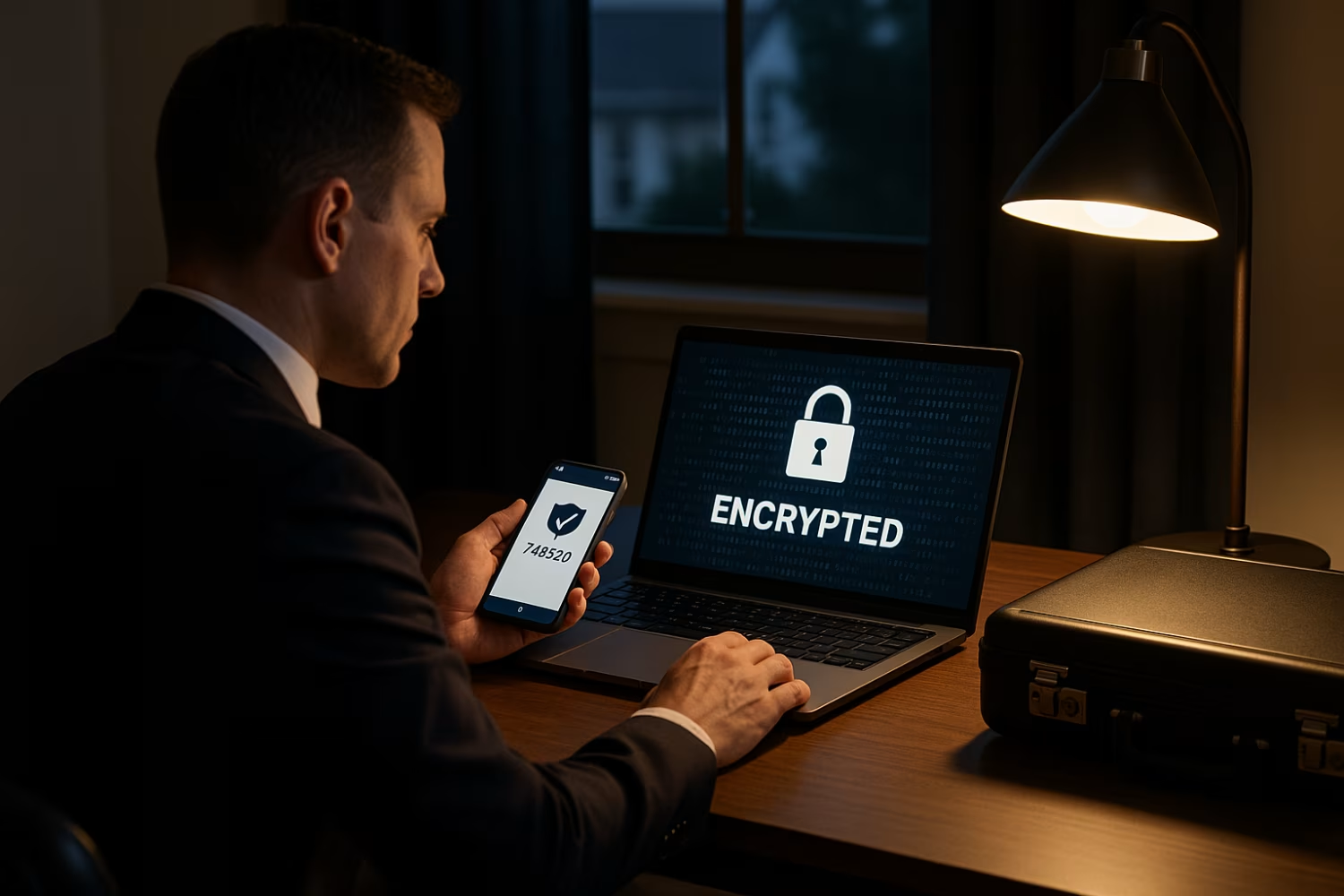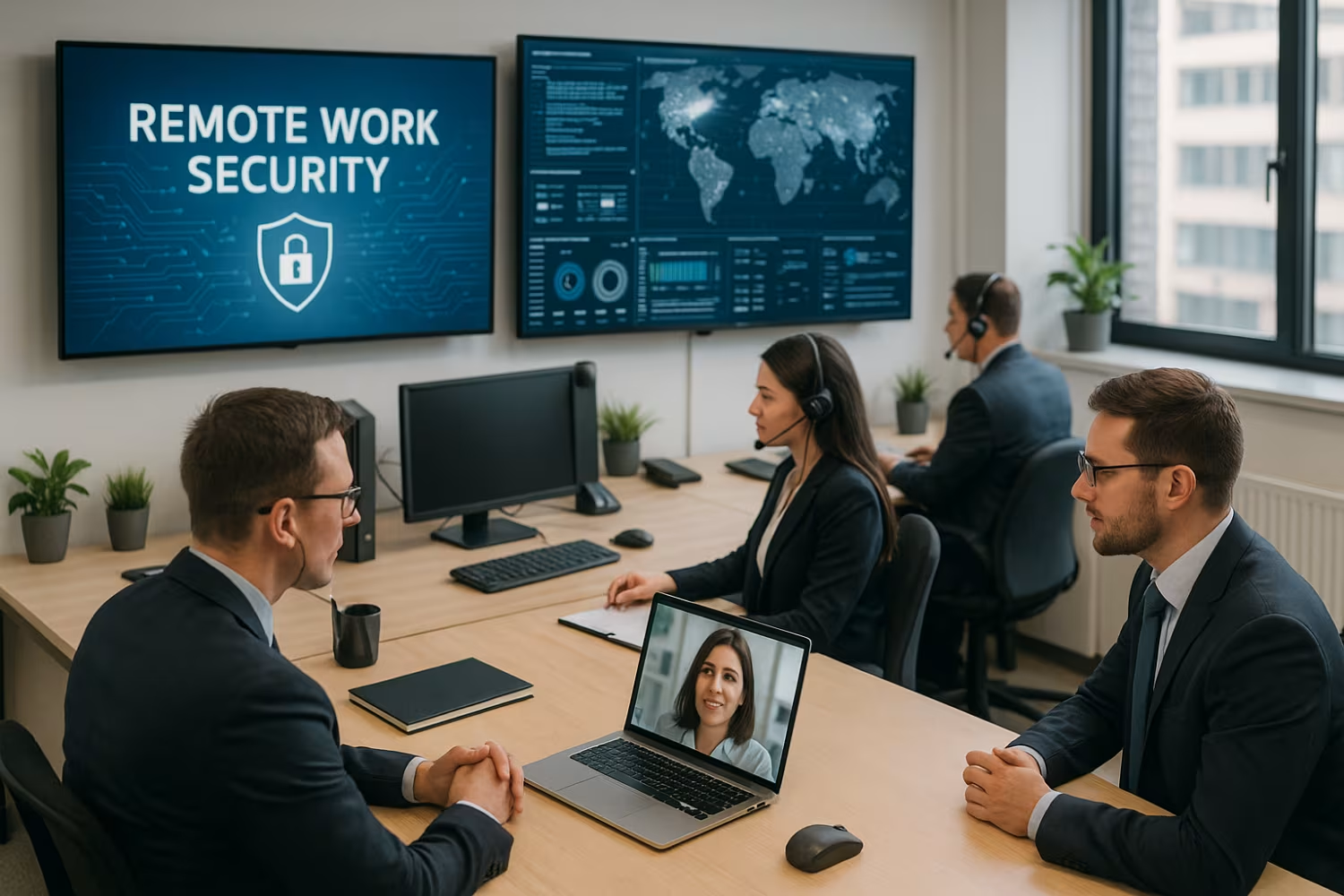Remote Work Security Tips: Best Practices for Remote Workers
Remote work security has become a top priority for businesses with hybrid or fully remote teams. As more employees work remotely, the risk of cyberattacks, data breaches, and unauthorized access has increased. In this blog, you'll learn what remote work security means, why it matters, and how to protect your business using proven strategies. We'll also cover BYOPC security solution for remote work, remote work security best practices, and how to reduce risks when employees use personal devices or unsecured Wi-Fi.
What is remote work security and why it matters
Remote work security refers to the systems and policies that protect company data, devices, and networks when employees work outside the office. This includes using secure connections, managing access to sensitive information, and protecting against threats like phishing and ransomware.
When employees work remotely, they often use personal devices or public Wi-Fi, which can introduce vulnerabilities. Without proper security controls, your business could face a data breach, malware infection, or loss of critical data. That’s why understanding and implementing strong security practices is essential.

Common remote work security mistakes and how to avoid them
Even well-meaning employees can make mistakes that put your company at risk. Here are some of the most common security issues and how to fix them.
Mistake #1: Using weak passwords
Simple or reused passwords are easy for attackers to guess. Encourage employees to use strong, unique passwords for each account. Consider using a password manager to help them keep track.
Mistake #2: Ignoring software updates
Outdated software often contains known vulnerabilities. Make sure all devices used for work are updated regularly, including operating systems, browsers, and apps.
Mistake #3: Skipping multi-factor authentication
Multi-factor authentication (MFA) adds an extra layer of protection. Even if a password is stolen, MFA can stop unauthorized access. Require MFA for all remote access points.
Mistake #4: Using unsecured Wi-Fi networks
Public Wi-Fi can expose data to hackers. If employees must use public networks, they should connect through a virtual private network (VPN) to encrypt their traffic.
Mistake #5: Mixing personal and work devices
Using personal devices for work can increase the risk of malware or data leaks. A BYOPC security solution for remote work can help secure these devices without invading privacy.
Mistake #6: Falling for phishing emails
Phishing attacks trick users into giving up credentials or installing malware. Train employees to recognize suspicious emails and report them immediately.
Mistake #7: Not backing up data
If a device is lost or hit by ransomware, backups can save your data. Use automated cloud backups to protect important files.
Key benefits of a secure remote work setup
A secure remote work environment protects your business and supports employee productivity. Here are the main advantages:
- Reduces the risk of data breaches and cyberattacks
- Protects sensitive information from unauthorized access
- Builds trust with clients and partners
- Keeps remote employees productive and connected
- Ensures compliance with industry regulations
- Supports long-term remote work strategies

Understanding the security risks of remote environments
Remote environments introduce more variables than traditional office setups. Employees may use unsecured networks, outdated devices, or weak passwords. These factors increase the risk of a security incident.
Cybercriminals often target remote workers because they know security controls may be weaker. Without proper training and tools, employees can accidentally expose sensitive data or fall victim to social engineering attacks. A strong remote work security plan helps reduce these risks.
Tools and strategies to secure your remote workforce
Protecting your remote workforce requires a mix of technology, policies, and training. Here are some key tools and strategies to consider:
Strategy #1: Use a virtual private network (VPN)
A VPN encrypts internet traffic, making it harder for attackers to intercept data. Require employees to use a VPN when accessing company systems remotely.
Strategy #2: Implement endpoint protection
Endpoint protection tools monitor and secure devices like laptops and smartphones. This helps detect malware, ransomware, and other threats before they cause damage.
Strategy #3: Apply role-based access controls
Limit access to sensitive data based on job roles. This reduces the chance of unauthorized access if an account is compromised.
Strategy #4: Monitor for unusual activity
Use monitoring tools to detect suspicious behavior, such as logins from unknown locations or large file transfers. Early detection can prevent major security incidents.
Strategy #5: Encrypt sensitive data
Encryption protects data by making it unreadable without the correct key. Encrypt files on devices and during transmission to keep information safe.
Strategy #6: Train employees on cybersecurity
Regular training helps employees recognize threats like phishing and social engineering. Make security awareness part of your company culture.
Strategy #7: Use a BYOPC security solution for remote work
If employees use personal devices, secure them with tools that separate work and personal data. This protects company information without invading privacy.

How to implement remote work security best practices
Start by assessing your current security posture. Identify gaps in device management, access controls, and employee training. Then, create a plan that includes clear policies, reliable tools, and regular reviews.
Make sure your IT team or provider can support remote work security best practices. This includes setting up secure access, managing updates, and responding to threats quickly. Don’t forget to document everything so employees know what’s expected.
Best practices for securing remote employees
To keep your remote team safe, follow these proven practices:
- Require strong, unique passwords for all accounts
- Enforce multi-factor authentication on all systems
- Use VPNs to secure internet connections
- Keep all devices and software up to date
- Provide regular cybersecurity training
- Monitor for signs of a security breach
These steps help reduce the risk of a security incident and protect your business.

How Leet Services can help with remote work security
Are you a business with 15–80 employees looking to improve your remote work security? If you're growing and need to protect your team and data, we can help you build a secure and productive remote environment.
At Leet Services, we specialize in helping businesses like yours implement remote work security best practices. From endpoint protection to BYOPC security solution for remote work, our team provides the tools and support you need to work safely from anywhere.
Frequently asked questions
What are the biggest cybersecurity risks for remote workers?
Remote workers face several cybersecurity risks, including phishing attacks, weak passwords, and unsecured Wi-Fi. These threats can lead to data breaches or unauthorized access.
Using personal devices without proper protection also increases vulnerability. To reduce risk, employees should use a VPN, keep software updated, and avoid sharing sensitive information over public networks.
How can I protect sensitive information when employees work remotely?
To protect sensitive information, use encryption and secure file-sharing tools. This ensures data stays safe during transmission and storage.
Also, train employees to recognize phishing attempts and avoid using public Wi-Fi without a VPN. Strong access controls and regular audits help prevent unauthorized access.
Should remote employees use personal devices for work?
Using personal devices can be risky without proper controls. A BYOPC security solution for remote work can help secure these devices without compromising privacy.
Make sure personal devices have endpoint protection, updated software, and access only to necessary systems. This reduces the chance of a security incident.
What’s the best way to secure Wi-Fi connections at home?
Employees should secure their home Wi-Fi by changing default passwords and enabling WPA3 encryption. This prevents unauthorized users from accessing the network.
Using a virtual private network (VPN) adds another layer of protection. It encrypts internet traffic, making it harder for attackers to intercept data.
How does multi-factor authentication improve remote work security?
Multi-factor authentication (MFA) adds a second step to the login process, such as a code sent to a phone. This makes it harder for attackers to access accounts, even with a stolen password.
MFA is one of the most effective ways to reduce the risk of unauthorized access. It’s a key part of advanced cybersecurity strategies for remote teams.
What should I do if there’s a suspected security incident?
If you suspect a security incident, act quickly. Disconnect affected devices from the network and notify your IT team or provider.
Document what happened, including any suspicious emails or activity. Early response can limit damage and help prevent future issues.





.avif)
.avif)
.avif)


